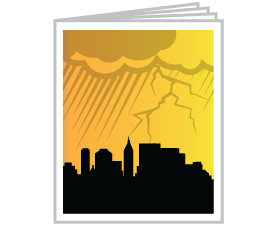As society grows increasingly concerned about the risk of climate change impacts on its communities, health and ecosystems, a new response is emerging - that of adaptation.
At many civic levels -- whether governmental, residential, business or military -- key players are outlining adaptation policies. They hope to cope with the extreme weather, flooding and sea-level rise, heat waves, drought, health and other impacts that experts predict we will experience more of in coming years, even if we take steps to reduce greenhouse gas emissions.
The explosion of information and ideas about adaptation is not always well organized or easily available to reporters. Yet without easy access to that knowledge and the sustained journalistic scrutiny -- and corresponding public awareness -- that follows, new adaptation policies can stall, preparations for future risk can be set aside, and local stakeholders be left out.
This Reporter’s Guide to Climate Adaptation is designed to address that problem. By bringing together a wide array of resources on government and non-governmental organizations, policies, research and other information about adaptation, we hope that reporters of all stripes - not just experienced environmental journalists - can better tell the adaptation story.
The publication of this guide is especially timely. The United Nations conducted a global conference on climate change in Paris December 2015, that dealt, in part, with how nations can prepare for climate impacts. But the adaptation story continues on, long after negotiators head home, and one way or another we prepare for the risks that climate change brings. Our hope is that this evolving guide will enable reporters to better deal with the complexities of this story over the long term.
Search the Website
